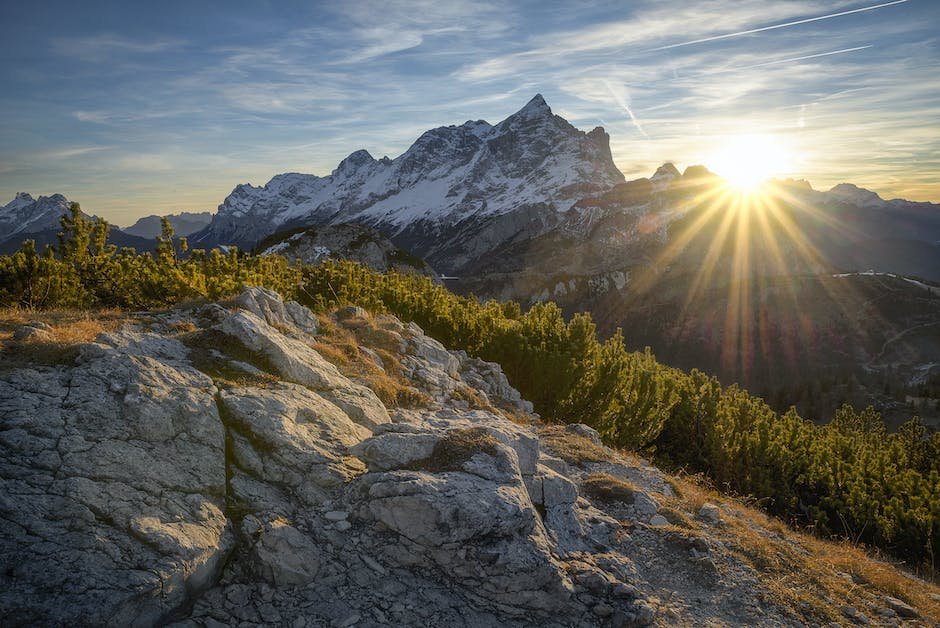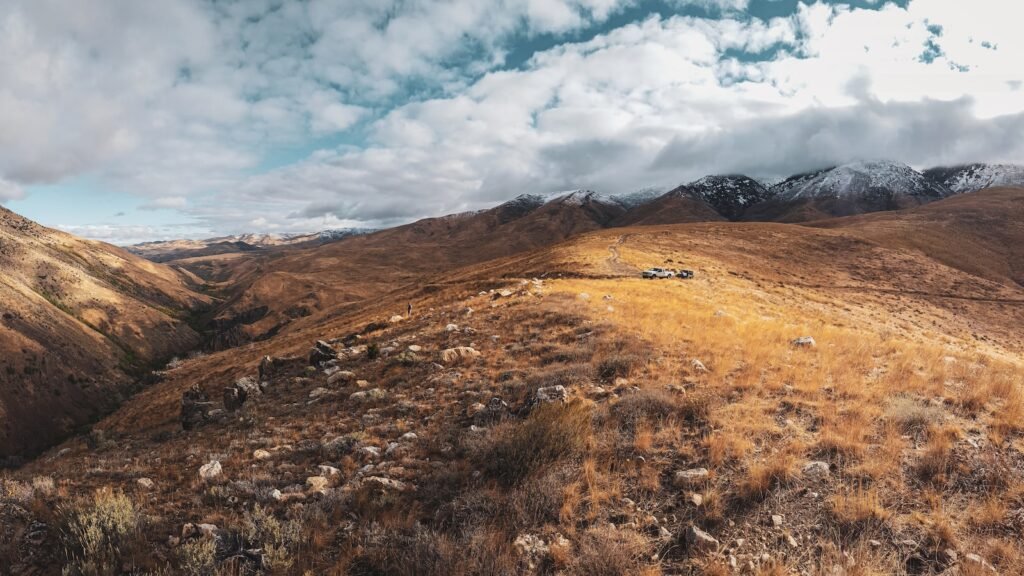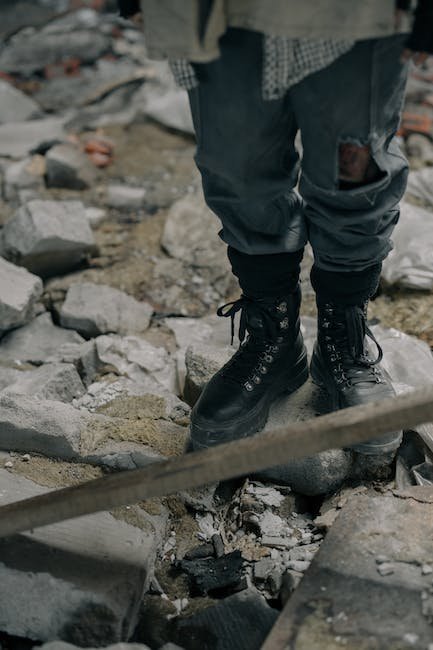Now Reading: How to Purify Water in the Wild: Methods and Tips
-
01
How to Purify Water in the Wild: Methods and Tips
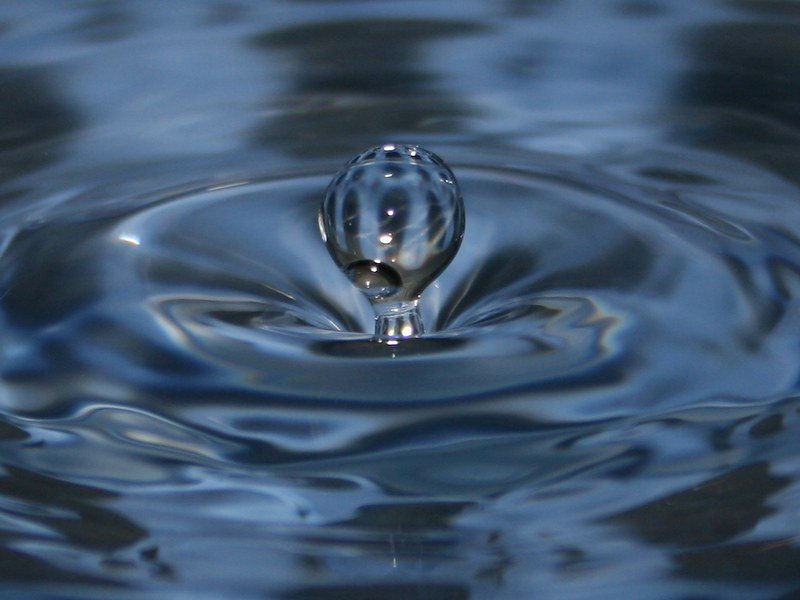
How to Purify Water in the Wild: Methods and Tips
Surrounded by lush wilderness, you embark on an exhilarating journey into the unknown. The mesmerizing beauty of nature engulfs you, filling each breath with pure serenity. As you tread deeper into uncharted territories, however, you realize the importance of a fundamental resource that is often taken for granted – water. Fear not, intrepid explorer, for we have gathered an array of ingenious methods and valuable tips to quench your thirst and ensure your survival with one vital skill: purifying water in the wild. Discover ancient techniques and modern innovations as we unravel the secrets to transforming nature’s elixir into a safe and refreshing source, harmonizing the elements around you and allowing you to forge deeper into the untouched landscapes. So, prepare to enrich your wilderness experience as we embark on a journey through the art of water purification, where nature’s bounty becomes your vital ally.
Table of Contents
- Understanding the Importance of Water Purification in the Wilderness
- Effective Water Purification Methods for Survival Situations
- Exploring Natural Water Sources: Identifying Potential Contaminants
- Essential Equipment and Techniques for Purifying Water in the Wild
- Tips and Precautions for Safe Drinking Water in Outdoor Environments
- Q&A
- Final Thoughts

Understanding the Importance of Water Purification in the Wilderness
Exploring the breathtaking wilderness can be an exhilarating experience, but amidst the mesmerizing beauty lies a hidden danger – impure water sources. is paramount to keeping yourself safe and preventing waterborne illnesses.
1. Protection against harmful bacteria: In the wild, water sources can easily get contaminated with bacteria such as E. coli or Salmonella. These pathogens can cause severe gastrointestinal issues and put your health at risk. Purifying water eliminates these harmful microbes, making it safe for consumption.
2. Filtering out parasites and viruses: An untouched oasis may seem like a safe bet, yet microscopic parasites like cryptosporidium or viruses such as norovirus can still lurk within. Water purification methods like boiling, using water filters, or chemical treatments target these tiny threats, ensuring that your drinking water is free from unseen dangers.
3. Preventing waterborne diseases: When venturing into the wilderness, contracting diseases like giardia or dysentery can ruin any adventure. These waterborne diseases are commonly transmitted through unsafe water. By purifying water, you decrease the risk of falling victim to these debilitating illnesses.
Remember, even the clearest mountain streams can harbor invisible dangers. Prioritizing water purification methods is crucial for your well-being during outdoor excursions. Stay safe, stay hydrated!
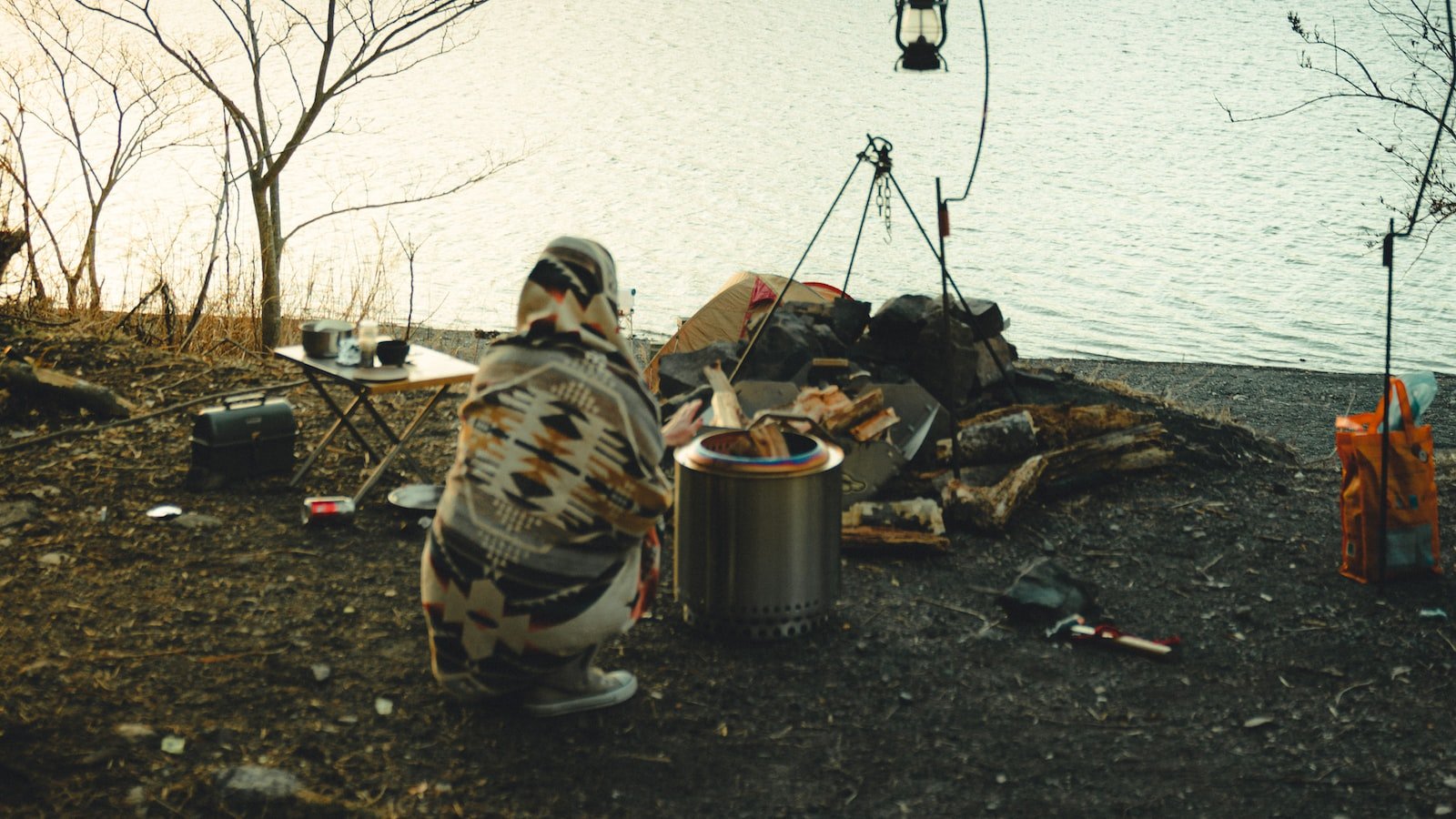
Effective Water Purification Methods for Survival Situations
In survival situations, having access to clean and safe drinking water is crucial for your well-being. However, finding a reliable source of drinking water can be a challenge. Luckily, there are various effective water purification methods that can help you obtain clean water even in the most demanding conditions, giving you a better chance of survival.
1. Boiling: Boiling is one of the simplest and oldest methods of water purification. By bringing water to a rolling boil for at least one minute, you can effectively kill pathogens and make the water safe to drink. Remember to let it cool before consuming.
2. Filtration: Filtration is an excellent way to remove impurities from water. Using a portable water filter, such as a straw filter or a pump filter, can help eliminate bacteria, parasites, and other harmful elements. Look for filters with a small enough pore size to ensure thorough purification.
3. Chemical Treatment: Chemical treatments, like using water purification tablets or adding chlorine drops, are effective in neutralizing viruses, bacteria, and protozoa. Follow the instructions provided with the treatment method you choose and allow the appropriate contact time to ensure safe water consumption.
Keep in mind: No matter the method you use, it is crucial to be aware of the quality of the water source. Always gather water from the cleanest available source, avoiding stagnant water and areas contaminated by pollutants. Additionally, consider carrying a durable water container to store purified water for later use.

Exploring Natural Water Sources: Identifying Potential Contaminants
When it comes to accessing water in its purest form, natural sources can be a blessing. However, it is crucial to be aware of potential contaminants lurking in these sources to ensure the safety of our water supply. By carefully identifying potential contaminants, we can take proactive measures to prevent any adverse effects on our health and the environment.
Understanding the sources:
1. Spring Water: Springs are formed when water from underground aquifers naturally rises to the surface. While spring water is considered relatively safe, it may still contain contaminants such as bacteria, viruses, or chemicals picked up from natural or human activities along its path.
2. Well Water: Wells tap into underground water sources and act as a direct resource for drinking water. Contaminants in well water can originate from nearby industries, agriculture, or even naturally occurring substances such as arsenic or radon. Regular testing is essential to ensure its safety.
3. River Water: Rivers are an abundant natural water source and serve as a lifeline for numerous communities. However, they can be vulnerable to pollution caused by agricultural runoff, industrial waste, or improper waste disposal from human activities.
Identifying potential contaminants:
1. Microorganisms: Bacteria, viruses, and parasites can all pose a threat to our health if present in natural water sources. These microorganisms can cause diseases such as diarrhea, cholera, or typhoid fever.
2. Heavy Metals: Natural water sources can accumulate heavy metals such as lead, mercury, or arsenic, which are extremely harmful to human health even in small concentrations. These metals can enter water sources from industrial discharges, mining activities, or rock formations.
3. Agricultural Chemicals: Pesticides, fertilizers, and herbicides used in agriculture can contaminate water sources through runoff or leaching. Exposure to these chemicals may lead to various health issues such as hormonal imbalances, reproductive problems, or even cancer.
By understanding the different natural water sources and identifying potential contaminants, we can take the necessary measures to safeguard our water supply. Regular testing, appropriate filtration systems, and responsible land and water management are paramount in ensuring that the water we consume remains clean and free from any harmful substances.

Essential Equipment and Techniques for Purifying Water in the Wild
When venturing into the wild, ensuring access to clean and safe drinking water is of utmost importance. Here are some essential equipment and techniques that can help you purify water:
1. Portable Water Filter
- Investing in a reliable portable water filter can be a game-changer.
- Look for filters that can effectively remove bacteria, protozoa, and viruses.
- They are usually lightweight, easy to use, and can be a valuable long-term solution.
2. Boiling
- Boiling water is one of the simplest and oldest methods of purification.
- Bring water to a rolling boil for at least one minute (or longer at higher altitudes) to kill most germs.
- Remember to let the water cool down before drinking it.
3. Water Purification Tablets
- Compact and lightweight, water purification tablets are a convenient option in emergencies.
- Follow the manufacturer’s instructions carefully when using them.
- These tablets typically contain chemicals that disinfect and kill harmful microorganisms.
Remember that purifying water in the wild is essential to prevent waterborne illnesses. By carrying the right equipment and mastering purification techniques, you can stay hydrated and healthy even in the most remote locations.
Tips and Precautions for Safe Drinking Water in Outdoor Environments
Are you planning an exciting adventure in nature? Whether you’re hiking, camping, or simply enjoying a day at the beach, it’s essential to stay hydrated. However, drinking water safety should never be compromised, especially when you’re away from the convenience of a clean tap. Follow these useful tips and precautions to ensure that your outdoor experience remains enjoyable and safe:
– Bring a reliable water filtration system: Investing in a high-quality water filtration system is a game-changer when it comes to outdoor activities. Look for portable filters that effectively remove harmful bacteria, parasites, and debris, providing you with safe drinking water on the go. Remember to check the filter’s lifespan and replace it regularly for optimal performance.
– Carry multiple water bottles: It’s always better to have more water than you think you’ll need, especially in remote locations. Bring multiple water bottles and distribute them evenly among your group. This ensures everyone has access to an adequate water supply throughout your adventure. Consider reusable bottles made of durable materials to minimize waste and protect the environment.
– Identify and use natural water sources cautiously: While natural water sources like rivers, lakes, and springs may seem tempting to quench your thirst, exercise caution. Contaminants and harmful pathogens might be present, even if the water appears clear. If you choose to use these sources, boil the water or use water disinfection tablets/purification drops beforehand. Alternatively, gather water from higher elevations, where it’s less likely to be contaminated by human and animal activities.
– Prioritize cleanliness: Maintaining personal hygiene while in the great outdoors is crucial for preventing waterborne illnesses. Always wash your hands with soap and clean water before handling any drinking vessels or consuming food. Additionally, store your water bottles in a clean, dry place and avoid touching the spout or rim to minimize the risk of contamination.
Remember, access to safe drinking water is fundamental to your well-being when enjoying outdoor activities. By following these tips and taking necessary precautions, you can ensure that you stay hydrated and healthy throughout your outdoor adventures. Stay safe and make unforgettable memories!
Q&A
How can I purify water in the wild?
To purify water in the wild, you can use various methods like boiling, using purification tablets or drops, filtering through cloth, or even utilizing natural resources like rocks or solar radiation.
Why is it important to purify water in the wild?
Purifying water in the wild is crucial to prevent waterborne diseases caused by bacteria, viruses, and parasites commonly found in untreated water sources. It ensures your safety and good health during outdoor adventures.
What is the most effective method to purify water in the wild?
Boiling water is considered the most effective method to kill harmful microorganisms. Rapidly boiling water for at least one minute (or three minutes at higher altitudes) will assure the destruction of harmful pathogens.
Are purification tablets or drops a reliable option?
Yes, purification tablets or drops are reliable options when purifying water in the wild. These products contain chemicals that effectively neutralize microorganisms present in the water, making it safe for consumption.
Can I use a regular cloth to filter water?
While a regular cloth might remove some larger impurities, it may not effectively eliminate harmful microorganisms. Opt for a tightly woven fabric or a proper water filter to ensure safe drinking water in the wild.
Can I use sunlight to purify water?
Yes, sunlight can be used as a method to purify water through solar disinfection (SODIS). Simply fill a clear plastic container with water and let it sit in direct sunlight for at least six hours. UV radiation from the sun will kill many harmful pathogens.
What should I do if I have no purifying methods available?
If you find yourself without any traditional purifying methods, you can dig a shallow well near a riverbank and wait for the water to seep through the soil. Additionally, collecting rainwater or melting ice and snow from a clean source can provide safe drinking water in an emergency.
What are some precautions to take when purifying water in the wild?
Always remember to check for any visible contaminants before purifying water. Avoid using water from stagnant sources or near potential pollution sources. It’s also essential to store purified water in clean containers to prevent recontamination.
Final Thoughts
In the untamed depths of the great outdoors, where rivers dance with life and pristine lakes glisten under the watchful eye of towering trees, lies an elemental secret – the life-giving elixir we call water. Yet, in this rugged wilderness, where majestic adventures await at every turn, the purity of this liquid treasure is often obscured by hidden risks that threaten the unprepared.
But fear not, fellow wanderers, for armed with knowledge and a thirst for survival, we are equipped to conquer any wilderness’s most clandestine adversary – impure water. In this article, we embarked on a journey to uncover an assortment of methods and tips to purify water in the wild, offering you the tools needed to quench your thirst while ensuring your well-being.
We delved into the realm of boiling, where the crackling fire whispers ancient wisdom as its warm embrace wrestles with impurities, sending them fleeing into the ether. We embraced the power of fire, the guardian of purity, and learned how a mere rolling boil can eradicate nefarious microorganisms, granting us the gift of safe hydration in the wild.
Venturing further, we discovered the enchanting world of water filters and their ability to capture even the tiniest impurity with their microscopic guardians. These diligent protectors join forces with us as we traverse the wilderness, allowing water to flow freely through their fine maze, channeling nothing but life’s liquid essence.
Our odyssey guided us to the mysterious realm of chemical purification, where drops of potent sorcery transform translucent streams into pristine pools of tranquility. In this alchemical dance, secret agents assault harmful creatures and neutralize their treacherous influence, ensuring the water we embrace is not just appeasing to the eye, but safe to drink.
And let us not forget the resolute power of ultraviolet light, that celestial magician sent from the cosmos. In this age-old confrontation between darkness and light, we witnessed how mere seconds of ultraviolet radiance transformed polluted water into translucent purity, freeing us from the shackles of fear and granting us the freedom to indulge in the nectar of life, wherever our wild hearts roam.
Armed with these newfound insights, boldly cast aside trepidation and embrace the wild with open arms. The untamed terrain, with its allure and wonder, can become your playground, knowing that with each sip of purified water, you are taking control of your destiny.
So, dear adventurer, as you traverse rugged landscapes and chase the intrepid call of the wild, may these methods and tips become your allies, your trusted companions in the quest for untainted hydration. Always remember, water is life’s eternal thread, weaving through the fabric of our wildest of dreams.
As an affiliate, my content may feature links to products I personally use and recommend. By taking action, like subscribing or making a purchase, you’ll be supporting my work and fueling my taco cravings at the same time. Win-win, right?
Want to read more? Check out our Affiliate Disclosure page.

